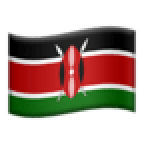On Monday, CNN International correspondent Larry Madowo disclosed that a Nairobi politician had offered goons a Sh100,000 bonus to disrupt his coverage of protests and to physically attack him on sight.
&format=jpeg)
An X post by Larry Madowo
According to Madowo, the hired attackers admitted on camera that they had been promised the payment to interfere with his work and break his equipment.
The incident comes amid growing threats to both professional and citizen reporters, especially during politically sensitive protests.
What has changed?
Madowo’s revelation underscores a trend many in Kenya’s media space have quietly noted: filming protests is becoming riskier.
Political interests now view cameras, whether held by a press crew or a bystander, as threats.
Smartphone footage can spread quickly and challenge official narratives, making those behind the lens vulnerable to intimidation, assault, or even arrest.
This shift means anyone aiming to document such events needs to be aware not just of personal safety, but also of the legal framework surrounding mobile coverage in public spaces.
How to film safely in a high-risk environment
1. Keep distance
&format=jpeg)
Protesters in Nairobi CBD
Stay at least ten metres away from police lines and concentrated crowds. Close proximity increases the chance of getting injured or swept up in clashes.
READ MORE: LSK, Red Cross, KNH & more: Emergency numbers every Kenyan needs during protests
2. Quick‑launch your camera
Instead of filming continuously, rely on your phone’s quick‑launch camera feature.
It allows you to capture key moments without draining battery or drawing unwanted attention.
3. Share your location
Send your live GPS pin to a trusted contact before and during coverage.
If anything goes wrong, someone will know where you are.
READ MORE: 8 safety measures to take before and during protests
4. Carry only essential equipment
&format=jpeg)
A photo of a person recording a video of people protesting
A charged smartphone and a power bank provide sufficient filming capacity without the bulk of camera bags or tripods. Large bags or professional gear may make you a target.
5. Know the exits
Before filming, identify at least two escape routes and the nearest first aid point. Avoid narrow alleys or dead ends.
READ MORE: Tear gas safety guide: 9 ways to protect yourself and others
Your rights while recording
&format=jpeg)
Larry Madowo comes to the aid of a man during maandamano on July 20 in Kamukunji area, Nairobi
Kenya’s Constitution guarantees the right to freedom of expression (Article 33) and media independence (Article 34).
These rights extend to individuals filming in public spaces, as long as their content does not promote hate speech, incitement or propaganda for war.
The Public Order Act requires protest organisers (not observers) to notify police.
Filming or observing a public protest is not prohibited.
Similarly, the Films and Stage Plays Act allows exemptions for news-gathering purposes, meaning casual protest coverage does not require a filming licence.
If law‑enforcement officers attempt to seize a device, calmly asserting one’s constitutional right to record public events can deter illegal confiscation, though caution and discretion remain essential.
A new reality for mobile reporting
What happened to Larry Madowo was not just a personal attack, it was a signal that documenting protests in Kenya has entered a new phase.
Whether recording for a newsroom or social media, the risks are real.
Understanding those risks, and preparing for them, is now part of the job for anyone who presses 'record' in public.


&format=jpeg)
)
&format=jpeg)
&format=jpeg)
&format=jpeg)